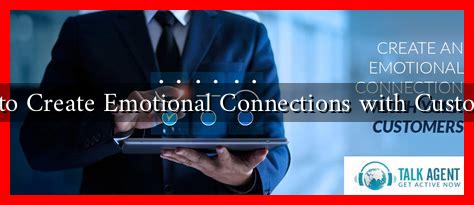-
Table of Contents
How to Create Emotional Connections with Customers
In today’s competitive marketplace, creating emotional connections with customers is more crucial than ever. Brands that can forge these connections not only enhance customer loyalty but also drive sales and foster long-term relationships. This article explores effective strategies for building emotional ties with customers, supported by examples and research.
Understanding Emotional Connections
Emotional connections are the bonds that form between a brand and its customers, often based on shared values, experiences, and feelings. According to a study by the American Marketing Association, emotionally connected customers are more than twice as valuable as highly satisfied customers. They are more likely to recommend a brand, repurchase, and forgive mistakes.
Strategies to Build Emotional Connections
Here are several effective strategies to create emotional connections with your customers:
- Tell Your Brand Story: Sharing your brand’s story can resonate with customers on a personal level. For instance, TOMS Shoes built its brand around the story of giving back, pledging to donate a pair of shoes for every pair sold. This narrative not only attracts customers but also fosters a sense of community and shared purpose.
- Personalize Customer Interactions: Personalization goes beyond using a customer’s name in emails. It involves understanding their preferences and behaviors. For example, Netflix uses algorithms to recommend shows based on viewing history, creating a tailored experience that keeps users engaged.
- Engage on Social Media: Social media platforms are excellent for building emotional connections. Brands like Wendy’s and Nike use humor and relatability in their posts, creating a sense of camaraderie with their audience. Engaging with customers through comments and messages also shows that you value their input.
- Show Empathy: Demonstrating empathy can significantly strengthen emotional ties. During the COVID-19 pandemic, many brands, such as Dove, shifted their messaging to focus on support and understanding, which resonated deeply with consumers facing uncertainty.
- Encourage User-Generated Content: Inviting customers to share their experiences with your brand can create a sense of belonging. GoPro, for instance, encourages users to share their adventure videos, fostering a community of enthusiasts who feel connected to the brand.
Case Studies: Brands That Excel in Emotional Marketing
Several brands have successfully created emotional connections with their customers. Here are a few notable examples:
- Coca-Cola: The “Share a Coke” campaign personalized bottles with popular names, encouraging customers to find and share their names. This simple yet effective strategy created a personal connection and increased sales significantly.
- Apple: Apple’s marketing focuses on innovation and creativity, appealing to customers’ aspirations. Their advertisements often evoke emotions related to family, friendship, and personal achievement, making customers feel part of a larger community.
- Airbnb: Airbnb’s “Belong Anywhere” campaign emphasizes inclusivity and belonging, resonating with travelers seeking authentic experiences. By showcasing real stories from hosts and guests, Airbnb creates a strong emotional connection with its audience.
The Role of Customer Feedback
Listening to customer feedback is essential for building emotional connections. Brands that actively seek and respond to feedback demonstrate that they value their customers’ opinions. This can be achieved through:
- Surveys and polls
- Social media interactions
- Customer reviews and testimonials
By acting on feedback, brands can improve their offerings and show customers that their voices matter, further deepening emotional ties.
Conclusion
Creating emotional connections with customers is not just a marketing strategy; it is a fundamental aspect of building a successful brand. By telling compelling stories, personalizing interactions, engaging on social media, showing empathy, and encouraging user-generated content, brands can foster loyalty and trust. As demonstrated by successful case studies, the emotional bond between a brand and its customers can lead to increased sales and long-term relationships. In a world where consumers have countless options, emotional connections can set your brand apart and drive sustainable growth.

